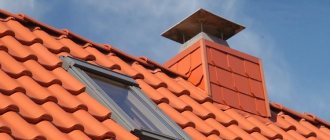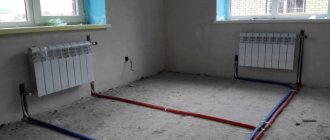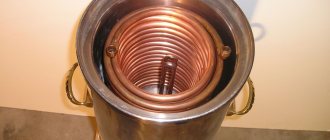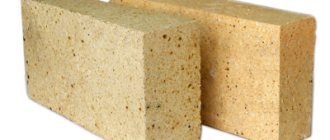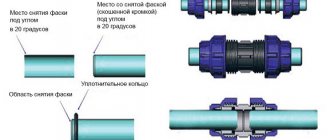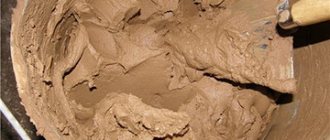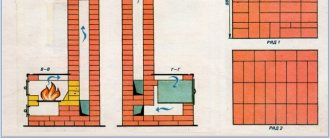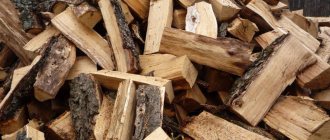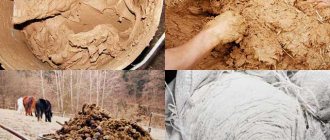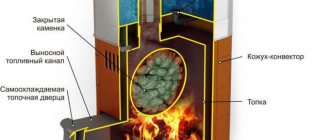Often, due to problems with good stove makers, the presence of brick or clay, people have to replace old brick stoves with metal ones. What does this mean?
First, let's figure out what a metal stove is. This could be a cast iron stove or a long-burning stove. It can be completely steel, or cast iron, or have a cast iron firebox.
There are models with ceramic (or soap chloride) lining. All this is reflected both in the price and characteristics of the stove. So, for occasional heating of a garage or workshop, even the simplest potbelly stove will do. If we are talking about a house, then it is better to take a stove with a higher efficiency
EVERYTHING YOU NEED FOR THIS ARTICLE IS HERE >>>
ADVANTAGES AND ADVANTAGES OF METAL OVEN.
They are not afraid of temperature changes and long breaks in the furnace, and do not require acceleration fires after downtime. That is, for those who come to a country house only for the weekend during the cold season, this is the best option. Moreover, such ovens heat the air very quickly.
Another advantage is the relatively low cost (when compared with a brick oven). Again, to install such a “hot heart of the house” you do not need to make a foundation or hire a stove-maker.
Compact dimensions allow you to place the metal stove almost anywhere. But observe the fire safety clearances, this is very important (the exact distances are indicated in the installation instructions). However, if the room is extremely compact, the indentations are sometimes reduced. And fire safety is ensured with the help of protective screens. The walls are fenced off with steel sheets, but not tightly, but with a 2-3-centimeter air gap. There is also a gap of 3-4 cm between the edge of the sheet and the floor. Thus, the metal, when heated, increases the convective movement of air near the wall. This protects the wall from overheating.
Last but not least, a factory-made metal stove may have a fire safety certificate. This means that it is much easier to obtain permission from firefighters to use it (provided that the installation was carried out exactly according to the instructions).
Features of metal stoves
Metal fireplace
A cast iron fireplace is made almost entirely of cast iron. The material has high heat transfer, thanks to which the stove quickly and evenly distributes heat in the house. The design consists of a chimney, a body and a firebox with thick walls, which is closed by a transparent door with heat-resistant glass. Improved models are complemented by heat exchangers for the operation of water heating.
The cast iron stove is connected to a regular exhaust pipe. Models that are technically complex require more painstaking work: connecting to a pipeline, creating a brick cushion, and bringing out a pipe. Simple fireplaces are better in terms of connection, but improved options open up more opportunities, including getting hot water at any time of the year without connecting to a general water supply system and purchasing expensive heaters.
The comfort of time spent in a steam room and the benefits obtained from it depend on many factors, primarily on how correctly the sauna stove is selected. It is simply impossible to unequivocally answer the question which heater stove for a bath is better: heat generators for a bath are designed for the types of available fuel, and their power is calculated depending on the size of the steam room.
Content
- Types of sauna stoves video
- gas stoves
- electric ovens
- wood burning stoves
- Brick oven and its advantages video
- Metal sauna stoves video
- How to choose a sauna stove
- Operational safety is a very important point
Types of sauna stoves
First of all, all types of sauna stoves are divided according to the type of fuel used. There are three options:
- traditional option - firewood,
- natural gas,
- electricity.
gas stoves
Although the use of gas as fuel for a furnace is the optimal option, which does not require fuel loading, removal of combustion products, or manual adjustment, a serious obstacle to its widespread use is the difficulty of developing an individual project and a rather complex and expensive connection procedure.
electric stoves
This type of heat source is different:
- interesting modern design,
- possibility of operation without installing a chimney system,
- the ability to automatically or manually regulate the temperature and maintain it at the desired level for a long period of time,
- There will also be no need for fuel storage.
At the same time, installing an electric unit will require the involvement of specialists who have access to perform work of such complexity. During the operation of the furnace, the cost of paying for the electricity used will also increase significantly.
wood burning stoves
It is much easier to acquire a wood-burning stove for a sauna. This option is preferred by true connoisseurs and experts in bath procedures. Depending on the material of manufacture, such stoves are divided into metal and brick. The stability of the amount of heat they emit is ensured by the large mass of the brick stove; the emitted heat is softer and more comfortable than that coming from a metal stove. The main disadvantage of brick structures is also associated with their large mass - it causes thermal inertia and increases the heating time of the steam room.
Brick kiln and its advantages
To make a rational choice of a sauna stove, you should consider in more detail the advantages and disadvantages of its varieties. If we take into account national traditions and the efficiency of the stove, then preference will be on the side of models built from brick. In addition, a brick stove, due to the large thickness of the masonry, will be less fire hazardous. Its walls will not heat up to such a temperature as to cause a fire from overheating.
Among the disadvantages of brick options, the complexity and relatively high cost of its construction should be noted. You will need a solid foundation, a well-founded design drawing, and masonry in strict accordance with it. The stoves are built from baked red brick, which is slightly shortened in length. Because of this, the dimensions of the stove are reduced to 74x74 cm.
The stove is installed on a foundation; its dimensions should exceed the dimensions of the base of the structure by about 10 cm. The under-furnace equipped from below is covered with wooden blocks and a brick vault. The oven is used to store equipment. Then a layer of roofing material is laid which will act as a waterproofing material. It will separate the foundation from the brickwork.
Checking the correctness of the masonry using a plumb line, construct a protective wall in five rows. Then a sand-clay mortar is mixed - it can withstand high temperatures that cement cannot withstand. The solution is mixed as follows: take 2 parts of sifted sand for 1 part of fatty clay. In accordance with the order, the stove itself is erected, tanks and grates are installed. Galvanized wire is used to attach the door to the firebox. If the stove is built according to all the rules, it will be economical and safe.
The design of sauna brick stoves can be different - with or without a chimney, respectively, they will be heated in white or black. The optimal option can be considered to build a furnace closed with a brick casing and equipped with cast iron plates for stones and for the tank.
If the size of the bathhouse allows, then you can design the construction of a brick stove with a closed heater (an open heater for the stove was used in the old days, when bathhouses were heated in black). The closed type of heater involves installing a container for laying stones above the firebox. Hot air passes through the stones, heating them to a temperature of about 400 degrees. A water tank with a capacity of up to 80 liters is located under the heater. In this case, the heat from the firebox does not evaporate through the pipe, but effectively works to heat the room - you can use the steam room 1.5 - 2 hours after lighting the stove. If the weight of the stones in a closed heater reaches 250-300 kg, then several families can use the sauna in turn - the high temperature in the steam room will be maintained for several hours.
Birch, aspen or oak firewood can be used as fuel. Mica must not be allowed to enter the firebox - its heating causes the formation of carbon monoxide, which poses a danger to human life.
Metal sauna stoves
Wood-burning stoves have a lower cost than metal ones, but building a brick slab is not a simple matter, requiring the hands of a craftsman. Finding it is not always easy. Most likely, it was this reason that served as the rapid popularization of metal sauna stoves. Such stoves produce good quality steam, they are easy to use, and their appearance is quite aesthetic and attractive.
The material for the manufacture of the metal plate is heat-resistant alloy steel containing about 12% chromium or cast iron. Stoves made of cast iron are heavier than steel ones, but lighter than brick ones; they heat up quite quickly and retain heat better than steel ones.
By design, metal furnaces can be closed, i.e. bricked or open. The latter produce stronger steam, but heat the room much faster. Combined stoves require the presence of two valves, a blower and a grate for stones. The advantages of metal structures are compactness, lack of smoke, and quick heating of the room.
The designs of metal sauna stoves can be very diverse; they can be made from barrels or scraps of pipes, steel sheets, and can be positioned vertically or horizontally. There are options when the heater, firebox and water tank are located in different rooms of the sauna house.
Most often, consumers prefer the option of a metal stove with a closed heater or a built-in one.
How to choose a sauna stove
To make the right choice, you should consider the following parameters of heat generators for a bath:
- quality of the steam produced,
- convective design,
- presence of a combustion tunnel,
- design power.
Steam Quality – The best choice would be a stove that produces light steam with minimal moisture content. Staying in a steam room with light steam does not cause difficulty breathing and does not increase blood pressure. Light steam is a finely dispersed structure obtained when water comes into contact with stones heated to 500 degrees C. But in this case, the air temperature in the steam room will rise to 110 degrees, using a broom at this temperature is dangerous - you can get thermal burns.
In order not to provoke the occurrence of such a situation, the wood-burning stove is equipped with a steam generator - a chamber made of metal and installed on the side of the firebox. It warms up faster than stones; upon contact with it, water turns into light steam.
Convection exchange. In order for the air temperature in the steam room at floor level and under the ceiling to be more uniform, it is necessary to ensure high-quality convection. It will also help warm up the air faster; you can start using the steam room 40-50 minutes after kindling. The selected version of the sauna stove should allow you to maintain a temperature in the steam room of about +45 degrees at floor level and +80 at the ceiling. Depending on the preferences of the bathhouse owners, you can plan a higher temperature.
The convective design of a sauna stove is characterized by the presence of a gap between the firebox and the tray with heated stones, which ensures the movement of heated air.
Fuel tunnel. Its presence in the stove design is due to the need to preserve oxygen in the steam room - it is taken from other rooms of the bathhouse, which have a much larger cubic capacity than the steam room. The presence of a fuel channel allows you to get rid of dirt and dust that inevitably enter the room when loading firewood. Equipping the combustion tunnel with a viewing fireplace glass significantly increases the aesthetics of the appearance of the stove.
Estimated power. Correct calculation of power is extremely important - an underestimated figure, just like excess power, will create serious problems during operation. Fortunately, the buyer does not need to intensively study the basics of heating engineering - all calculations are made by stove manufacturers; you just need to take the time and familiarize yourself with the data entered in the tables. the choice of a suitable model should be made taking into account a small power reserve, a maximum of 25%, because the quality of insulation of walls and ceilings in each bathhouse is different.
When choosing a sauna stove option, consider the following points:
- When choosing a stove, the availability of free space for its installation is important.
- You should also take into account the dimensions of the washing room and steam room, how many people can steam in them at the same time.
The choice may also be influenced by the desire to receive dry or wet steam. Particular attention should be paid to the possibility of quickly warming up the steam room.
Operational safety is a very important point
Since the operation of the stove is associated with the combustion process, care should be taken to comply with standards during its construction and compliance with fire safety rules during operation. Brick laying must be done with high quality, and the recommended clearances must be observed during construction:
- the distance between the floor and the ash pan should be about 20 cm,
- from the floor to the bottom of the smoke circulation - from 2 m 20 cm to 2 m 80 cm,
- from the top of the heat-intensive stove to the ceiling should be at least half a meter, for a non-heat-intensive stove - about 1 m (when calculating the distance, the protection of the ceiling is taken into account).
To prevent fire from falling sparks, the surface of adjacent walls and floors should be protected with metal. The use of birch firewood will help to protect the combustion process in terms of sparking - they burn hot and do not spark when burning.
Furnaces powered by gas fuel are no less dangerous; if the rules of construction or installation and operation are violated, they can be explosive. Electric heaters have a lower fire hazard, but their operation is quite expensive.
In addition to technical parameters, the stove must have a pleasant aesthetic appearance - after all, it will be the center of attention of people who come to relax in the bathhouse.
In order to make the correct and rational choice of a sauna stove, in addition to the advantages and features of each type of stove, you should take into account the size and layout of the sauna house, the number of rooms in it, the overall design, and your individual preferences. If choosing a design still causes difficulties, it is better to consult a qualified specialist on this issue.
Author: Sergey and Svetlana Khudentsov
10
Which brick should not be used for a stove?
The following options will not work:
- Raw - firstly, it is not always strictly the same shape, which will certainly result in flaws and an untidy appearance of the structure. Secondly, it has only undergone atmospheric drying, but not firing, which means that under the influence of high temperatures it will simply crumble into dust.
- Slip casting - it is also often non-standard, which slows down and complicates the construction of a firebox, pipe, channel, but more importantly, it quickly collapses with frequent changes in ambient temperature. This means that its only area of application is decorative.
- Hollow or slotted - it will not be able to stably withstand current loads, even mechanical, not to mention thermal. Literally a few kindlings in a cold winter, and cracks will appear, which over time will develop into destruction.
- Silicate or hyper-pressed - they do not tolerate heat well, and contain calcareous components that evaporate when heated, forming compounds harmful to health with the air.
If all of these types simply cannot be taken, and others are only partially suitable, then which stove brick is best to use for laying a stove? Ceramic is a classic option that has proven its practicality and remains relevant. It is made by plastic molding, squeezing clay through a die and then cutting it into blocks of suitable sizes. It is durable, frost-resistant and, in principle, meets all the above requirements; it can be of the following varieties:
- I (first) – its geometry is as accurate as possible, the color is bright and uniform, marks are free of burrs, the edges are not prone to crumble, and rings metallic when tapped; used in direct construction;
- II (second) - it is a little unburned, with a lighter shade, clearly, but sounds dull; used primarily for cladding;
- III (third) - burnt out, in terms of its operational characteristics does not reach the standard, but meets the requirements for creating a foundation.
And in any case, dimensions are important - when they are unified, it is very convenient.
Which design to choose for a country house
What cast iron heating stoves exist for a country house and how do they differ? By function, all structures can be combined into three large groups - heating, heating and cooking, fireplaces. Heating units are intended exclusively for heating rooms. They are designed to maintain temperature for as long as possible. There are models with advanced functions.
Diagram: operating principle of a gas generator stove
Long-burning heating stoves
Among heating stoves, convection and gas generator stoves are of particular interest. The former ensure the circulation of warm air between the walls of the firebox and the body, due to which they warm up the room faster, and gas-generating furnaces operate on the principle of double combustion of fuel. The design of gas generator furnaces differs from traditional models. In the first chamber of this design, the fuel burns slowly. The pyrolysis gas released during the combustion process enters the second chamber, where it is burned, and the heat is used to heat the room.
In temperature maintenance mode, gas generator models can operate for several hours. They use fuel economically and rationally, and their efficiency reaches 80-85%. There are models with automatic fuel supply. This is an expensive pleasure, but the home owner does not have to constantly monitor the consumption of firewood.
Drawing of the Buleryan stove for making it yourself
What types of cooking and heating models are there?
The upper part of such structures is a cooking surface - solid, with one or more burners. They are designed for cooking, heating food, and drying fruit. If desired, you can find designs complemented by a barbecue and/or oven.
Models of this type successfully combine two functions, but they cope with heating worse than “highly specialized” designs. They are best installed in small houses. For spacious rooms, it is worth choosing powerful long-burning heating stoves.
Models stylized as hearths, fireplaces, and tiled stoves look very beautiful. They often become the main detail of the interior. Stoves with glass doors and decorative elements look especially romantic. They are multifunctional - this is a plus, but the disadvantages include lower productivity, because... models hold heat worse.
Cooking and heating model with oven
Fireplace stoves - heating and romance in one bottle
Wood stoves with glass doors have remained popular over the years. On the contrary, they are increasingly in demand among buyers who pay special attention to the aesthetic aspect in home design. The sight of flames creates an atmosphere of romance, warmth, and intimacy. The doors are made of high-quality heat-resistant glass. The material is reliable, safe, and does not emit harmful substances. Designs of this type are more practical and fireproof than open fireplaces. In addition, they do not require major modifications to install a chimney, which will inevitably have to be done if you build a traditional fireplace.
The main function of such models remains heating the room, but aesthetics also play an important role. The reflections of fire on glass and pieces of furniture are unique light-color effects, the beauty of which lies in their unpredictability. There are corner structures, and there are also those that can be placed in the middle of the room. It all depends on the needs and wishes of the buyer.
Decoration of the stove-fireplace
Disadvantages of heat-intensive heating stoves.
- The main disadvantage of heat-intensive stoves, as well as their main advantage. this is inertia. That is, a heat-intensive stove must be kept in heating mode (heated periodically), otherwise you will not be able to achieve the required efficiency from it. In Russian it sounds like “Firewood into the pipe.”
- Heat-intensive stoves do not immediately begin to release heat into the room. The same inertia is to blame for this.
- Brick heat-intensive stoves are quite heavy and require a reliable independent foundation.
- The body of a brick heat-intensive stove takes up a lot of room space.
Let's compare
You can determine for yourself which of the two fireplaces presented is better after comparing the main characteristics.
- Operational life. Branded, expensive models of cast iron options can boast of a long service life. With regular use, a brick hearth begins to deteriorate 5-7 years after laying. Cast iron models can provide heat for more than 15 years. But a lot depends on the manufacturer and the chosen model. If the doors were originally installed
Brick fireplacecrooked, with bad details, then you should not expect long service from such a fireplace. Therefore, when purchasing, carefully inspect the condition of the unit, the strength of fastening of the parts, and make sure there are no chips or cracks.
- Appearance. In terms of aesthetics, a brick oven is definitely better. It can be built taking into account personal preferences, based on the style of the interior. But the appearance of its cast-iron counterpart scares off many. But it’s up to you to decide which fireplace is more beautiful.
- Installation. Installing a cast iron fireplace is much easier. This is explained by the ready-made design, which can be bought in the store. A qualified team will complete all the work in 3-5 days. To get a brick fireplace, you will need to find a competent stove maker (which is a rarity these days), draw up a diagram of the future hearth, open the floors, pour the foundation, and lay out the bricks. The material must be laid evenly, each layer is checked by the building level. One mistake made during the laying process will affect the operation of the fireplace.
- Price. At this point, the cast iron fireplace wins again. The cost of construction and installation is significantly lower than the price of bricks and the work of layers. If a metal stove will cost you, on average, 20 thousand rubles, then its competitor will require investments 2-3 times more.
Cast iron fireplace - Environmentally friendly. When heated, brick does not emit unpleasant odors or dangerous fumes. But when metal particles burn out, they are sprayed into the air, negatively affecting the atmosphere in the house.
- Mobility. The cast iron fireplace is heavy, but mobile. If desired, it can be moved to another room. To do this, you will have to change the location of the chimney. The brick hearth cannot be moved from its place. There is only one procedure for it - dismantling, that is, demolition.
- Purchase. Cast iron samples are presented in specialized stores. This allows you to buy a fireplace right away. It takes time to create a brick hearth.
- Heating capabilities. Both fireplaces perfectly perform their main function - heating the rooms. But there is one important difference: cast iron heats up slowly, but retains heat for a long time. Brick, on the contrary, heats up quickly, but also cools down just as quickly. You need to choose according to this criterion taking into account where the fireplace will be installed. For dachas and country properties, a brick model is suitable, allowing you to quickly get warmth when moving into the house. And in order to obtain constant heating from the fireplace, it is better to purchase a cast iron version.
